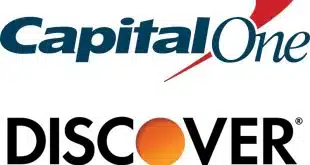While the electronic-payments industry waits for the Federal Reserve to come up with new debit card regulations, the Fed on Wednesday released results from its massive, triennial study of U.S. payments. The numbers show a dramatic rise in debit card transactions, coupled with an equally steep decline in check usage. This is the landscape against which the Fed will craft new rules governing interchange rates and routing practices for debit card transactions, as directed by the Dodd-Frank Act passed by Congress in July.
Checks written and paid as checks (that is, not converted to electronic transactions through the automated clearing house network), dropped to 24.4 billion in 2009 from 30.5 billion in 2006, according to the latest study. Debit card payments, by contrast, shot up 14.8% annually over the three-year period, to 37.9 billion from 25 billion. Based on transactions, debit cards are by far the most popular form of payment measured by the Fed, accounting for 35% of non-cash payments in 2009. Checks paid comes in a distant second at 22%, closely followed by credit cards (20%) and the ACH (18%).
For the study, the Fed treats prepaid cards as a separate category. These cards add another 5% share to the transaction volume claimed by debit cards of all types. Prepaid transactions totaled 6 billion last year, nearly double the 3.3 billion processed in 2006, the Fed report says, making prepaid cards the fastest-growing form of payment measured. Especially fast-growing are general-purpose prepaid cards, which saw their transaction volume soar from 300 million to 1.3 billion, or 22% of all prepaid volume. Private-label cards accounted for 2.7 billion transactions last year, while electronic-benefits transfer cards added another 2 billion. While the matter remains somewhat unclear, it is generally thought that most prepaid cards are exempt from Dodd-Frank, which also exempts cards issued by all institutions under $10 billion in assets.
Overall, the latest Fed payments study documents a steady march toward electronic forms of payment as consumers increasingly use cards instead of checks or cash and as more and more checks are converted to ACH debits. Indeed, more than 75% of all non-cash payments were performed electronically in 2009, up from about two-thirds in 2006, according to the report. Electronic payments of all types grew 9.3% per year, to 84.5 billion in 2009. “It seems clear the increasing adoption of electronic options, such as debit cards, online bill payments, and prepaid cards is a driving factor,” a summary of the report notes.
Even checks have moved dramatically into the electronic age. The Fed estimates that some 96% of checks paid are now cleared electronically, mostly because of image exchange. That’s up from an estimated 43% in only three years.
The latest triennial study, the fourth in a series the Fed has conducted, is based on three research efforts. Data on checks and ATM transactions are based on the results of the 2010 Depository Institutions Payments Study. Estimates for electronic payments were drawn from the 2010 Electronic Payment Instruments Study as well as the Depository Institutions Payments Study. Some check data were also derived from the 2010 Check Sample Study. McKinsey & Co. worked with the Fed to compile the final report.
A summary of the report can be found here.





